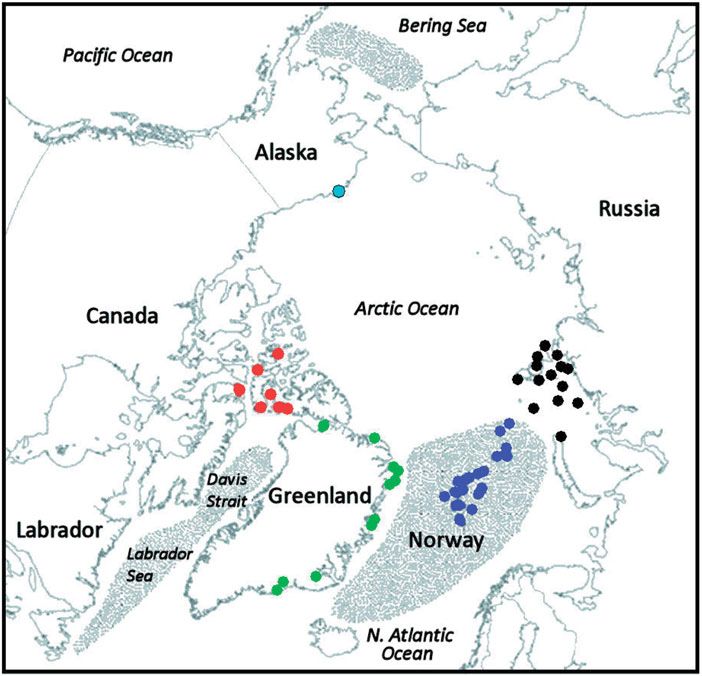
Conservation Genetics of Ivory Gulls (Pagophila eburnea), a Species-At-Risk
(S Royston & SM Carr. 2015. Mitochondrial DNA, 26, early online)
The high-arctic
Ivory Gull (Pagophila eburnea) has recently undergone
a sharp decline in numbers, and in Canada it is listed as ‘‘Endangered’’
under the Species-At-Risk Act. To test for circumpolar genetic distinctiveness, we examined
264 bp of the mtDNA Control Region Domain I from 127 museum specimens collected during the
breeding season from northern Canada, Greenland, and Norway, and during the
non-breeding season from adjacent overwintering grounds in Canada, Greenland, and a disjunct
area in Alaska adjacent to the Bering Sea. SNP variation at seven sites defines seven
haplotypes, of which only three are relatively common.
Partition of genetic variance according to various
phylogeographic and breeding ground models indicates no strong population structure,
except that non-breeding Alaska birds are consistently differentiated from other locations. There are
significant temporal shifts in haplotype frequencies between pre- and post-1934 birds.
The evidence suggests that Ivory Gulls in Canada, Greenland,
and Norway are a single genetic entity, in contrast to
Alaska birds, which may represent a distinctive Siberian population.